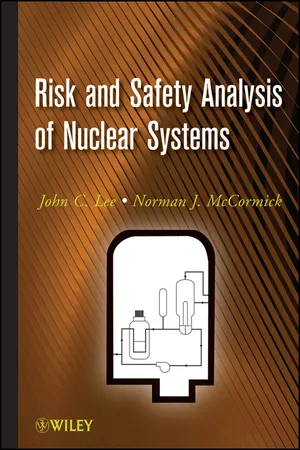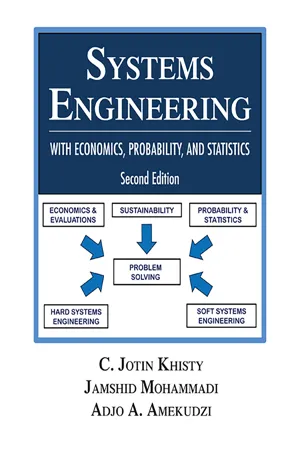Technology & Engineering
Probability Tree
A probability tree is a visual tool used to calculate the probability of multiple events occurring in succession. It consists of branches representing different possible outcomes at each stage, with the probabilities of these outcomes displayed. By following the branches and multiplying the probabilities along the way, the overall probability of a sequence of events can be determined.
Written by Perlego with AI-assistance
Related key terms
Related key terms
1 of 4
Related key terms
1 of 3
5 Key excerpts on "Probability Tree"
- Gideon Keren, George Wu, Gideon Keren, George Wu(Authors)
- 2015(Publication Date)
- Wiley-Blackwell(Publisher)
Decision technologies can be used to divide the set of judgments and decisions that are needed into subparts so the whole decision is easier to manage. Such a “divide and conquer” approach allows people to make better decisions. Knowing the steps in a decision technology can also suggest places where it may fail or be subject to manipulation. Prior research has examined the assumptions underlying expected utility (EU) theory or probability theory to see if they are descriptively accurate ways to describe people’s choices in decisions involving risk or their probability judgments. Understanding a technology’s vulnerabilities can also lead to improvements in the technology. For example, when people were found to be poor at judging probabilities, researchers focused on ways to improve probability assessments, such as the statistical training provided to experiment participants by Fong, Krantz, and Nisbett (1988) and a scoring rule to grade repeated probability judgments (Bickel, 2010).First, we introduce decision trees, then describe methods for determining probabilities and for valuing decision outcomes. Next, valuing decision alternatives measured by performance on multiple objectives is covered. We first present the prescriptive decision technologies, and then discuss behavioral biases in using these technologies.Decision Trees
The primary advantages of constructing a decision tree are: (a) the ability to portray visually the uncertain outcomes associated with each possible alternative action; (b) formal consideration of any future “real options” of actions that could be taken once probabilistic uncertainty is resolved; (c) summarization of the basic decision setting for communication with others; and (d) clarification of underlying assumptions. The tree provides a visual representation of the structure of the decision, permitting the decision maker to focus judgment on the pieces.Without formally using a decision tree, people have been found to have a hard time processing even elementary decisions. Tversky and Shafir (1992; also Shafir & Tversky, 1992) showed that experiment participants violated Savage’s (1954, p. 21) sure-thing principle by preferring the same vacation option under both possible future events (having passed an exam or not) but not preferring it before the exam outcome is known. For relatively more complicated decision trees, Gabaix and Laibson (2000) presented and experimentally verified the descriptive validity of a decision algorithm which simplifies trees by removing branches with low probabilities when a person has scarce cognitive resources for decision making. They called their decision algorithm boundedly rational, since it uses a simpler and quicker process than a fully rational analysis to find the normatively optimal decision. Using a decision tree can help a person: (a) avoid violating Savage’s sure-thing principle and/or (b) make more consistent choices.- eBook - ePub
- John C. Lee, Norman J. McCormick(Authors)
- 2012(Publication Date)
- Wiley(Publisher)
A major concern in event tree construction involves accounting for the timing of the events. In some instances, the failure logic changes depending on the time at which the events take place; such a case occurs, for example, in the operation of emergency core cooling systems in nuclear plants. Then dynamic event tree analysis techniques are needed to model the system that changes during the accident, even though the safety system components remain the same [Dev92,Izq96,Lab00]. Dynamic event tree analysis will be discussed in Chapter 13.Successful construction of an event tree provides a qualitative analysis of what happens after an initiating event, but if a quantitative analysis is desired, then each branch of the event tree must be quantitatively evaluated. This can be done by a variety of techniques, but typically the states in nuclear systems are assigned numerical values from fault tree analyses. The probabilities obtained must be conditional probabilities for each branch in a sequence, as schematically illustrated in Fig. 2.2 . Nonconditional and conditional probabilities are the subject of the next section.2.3 PROBABILITIES 2.3.1 Interpretations of ProbabilityThe classic mathematical interpretation of the probability of an event E , which is the relative frequency approach, requires that if event E in sample space S occurs X number of times out of a number n of repeated experiments whose outcomes are described by S , then the probability P (E ) of the outcome of event E is defined by(2.1)For a fixed n , the quantity X/n is the relative frequency of occurrence of E . Because it is impossible to actually conduct an infinite number of trials so that n → ∞, usually P (E ) is just approximated by X/n . The strong law of large numbers and the central limit theorem [Fe168,Man74,Pap02] provide a justification that improved estimates of P (E ) will follow by increasing n - eBook - ePub
Brand Risk
Adding Risk Literacy to Brand Management
- David Abrahams(Author)
- 2016(Publication Date)
- Routledge(Publisher)
Simple decision trees are easy to draw up by hand and work through with a calculator. More complex problems involve manipulating larger diagrams. These are most efficiently created and reviewed in a dedicated software application, such as Palisade Corporation’s PrecisionTree * or TreeAge Pro † from TreeAge Software. 8 Such software tools are extremely useful if there are likely to be numerous revisions of a decision tree, as insight into an issue develops or as initial assumptions are overtaken by events. SIMPLE EXAMPLE A tree-like diagrammatic structure makes it easy to set out alternative chains of events and calculate their joint probabilities of occurrence. For instance, assume that a customer has indicated to us that they intend to stock one of two products offered to them for listing, but are undecided as to whether they will take the new product into all stores or limit its distribution to test stores. Figure 6.1 shows a simple Probability Tree summarizing our own views on the prospects of securing a full listing for either of the new products in question. The diagram flows from left to right. Each individual branch of the Probability Tree represents a single issue or event and is labelled with its probability of occurrence where relevant. In our example, both of the two chains of events in bold type lead to the full listing we are interested in. Every outcome event (‘Test stores’ or ‘Full listing’) is conditional on the customer’s initial decision whether or not to stock the product. We therefore multiply the probabilities of each event in the chain to arrive at the joint probability of the final outcome. In the present case, we know that the two chains of events in bold type are mutually exclusive outcomes: if Product A is given a full listing then Product B will not be listed at all and vice versa - eBook - ePub
- C. Jotin Khisty, Jamshid Mohammadi, Adjo Amekudzi(Authors)
- 2012(Publication Date)
- J. Ross Publishing(Publisher)
SUMMARY(b) In this part, the probability of concern can be computed using Bayes’ theorem (Eq. 5.39). However, we do not know whether the snow accumulation was heavy or light. Thus we must consider both possibilities in our computation. The required probability is computed through the following series of calculations:In this chapter, the basic rules governing events and equations related to probabilities were reviewed. Probability is a numerical measure that describes the chance of occurrence of a specific event among a number of possibilities. The need to use probability stems from the fact that there is an element of uncertainty involved in any engineering decision-making process as well as in any engineering analysis and design procedure. Essentially, the purpose of analysis and evaluation of engineering data is to provide information for a meaningful estimation of parameters that influence the decision making and system analysis and design. The basic elements of the theory of probability are especially important in understanding the underlying concepts in the evaluation of data and estimation of statistical values of parameters that are involved in engineering problems.The review of events and probability provided in this chapter is brief. Nevertheless, the chapter provides nearly all of the essential equations needed to proceed with solving a given engineering problem. Several examples were provided to better acquaint the reader with the types of problems that an engineer may be facing. For a more complete treatment of the theory of probability as applied to engineering problems, the reader is referred to the list of references at the end of this chapter. These suggested references provide the reader with an ample number of illustrative examples that are useful for better understanding the application of the theory of probability to engineering problems.REFERENCESAng, A. H.-S. and W. H. Tang (2007). Chapter 2 in Probability Concept in Engineering: Emphasis on Applications to Civil and Environmental Engineering - Bilal M. Ayyub, Richard H. McCuen(Authors)
- 2016(Publication Date)
- CRC Press(Publisher)
Figure 15.11 .Because all the tree branches are possible failure scenarios, they can be considered as failure modes for the system with varying levels of consequence. Branches that produce high probabilities with significant consequences are referred to as high-risk branches and should be targeted for risk improvement. The meaning of risk in this case is the combination of both occurrence probability and consequences. The combination can be expressed for each scenario as follows:The risk improvement can be achieved either by reducing the occurrence probability through system or component changes or by reducing the potential consequences or making changes to the scenarios.Risk = occurrence probability × occurrence consequence(15.24)Example 15.6: Reliability of a Nuclear Reactor Using ETAThe event tree shown in Figure 15.11 is used in this example to illustrate the computations of branch probabilities. The assumed annual occurrence probabilities for the events E, E1, E2, E3, and E4 are for the purpose of illustration and are given byP(15.25a)( E )= 1 E- 04P(15.25b)(= 1 E- 07E 1)P(15.25c)(= 1 E- 05E 2)P(15.25d)(= 1 E- 06E 3)P(15.25e)(= 1 E- 05E 4)where 1E-04 = 1 × 10−4 . Table 15.1 shows the computation of the branch probabilities and approximate expressions for computing the branch probabilities. Because the event probabilities as given by Equations 15.25a through 15.25e
Index pages curate the most relevant extracts from our library of academic textbooks. They’ve been created using an in-house natural language model (NLM), each adding context and meaning to key research topics.
Explore more topic indexes
Explore more topic indexes
1 of 6
Explore more topic indexes
1 of 4




